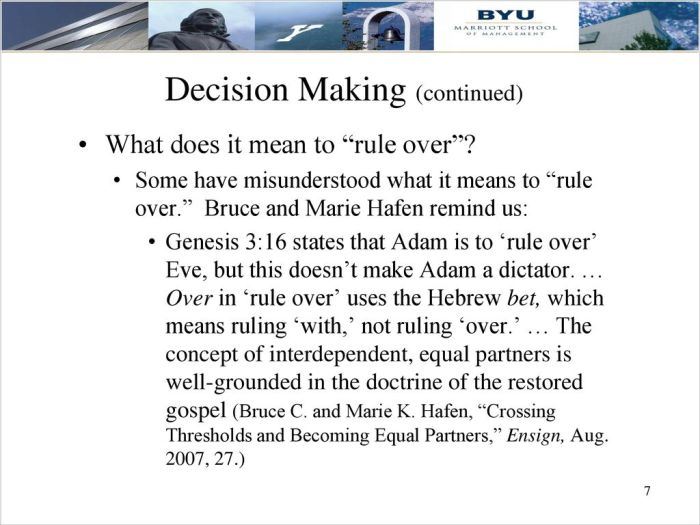Crossing thresholds and becoming equal partners sets the stage for this enthralling narrative, offering readers a glimpse into a story that is rich in detail and brimming with originality from the outset. As we delve into the complexities of partnership dynamics, we will explore the significance of acknowledging and crossing thresholds, identify factors that contribute to or hinder equality, and provide strategies for promoting equality in partnerships.
The content of the second paragraph that provides descriptive and clear information about the topic
Crossing Thresholds
Thresholds are pivotal junctures in partnerships, marking transitions that shape the dynamics and trajectory of the relationship. They represent moments of challenge and opportunity, requiring partners to confront and overcome obstacles in order to deepen their connection and achieve greater equality.
Common thresholds include:
- Defining roles and responsibilities
- Negotiating boundaries
- Addressing conflicts and differences
- Making major life decisions together
- Balancing individual needs with partnership goals
Acknowledging and crossing these thresholds is crucial for the growth and success of a partnership. By embracing these challenges, partners can strengthen their bond, build trust, and foster a more equitable and fulfilling relationship.
Achieving Equality in Partnerships

Equality in partnerships entails the mutual recognition and respect of each partner’s worth, rights, and contributions. It fosters a sense of balance, fairness, and shared decision-making, where both individuals feel valued and empowered.
Factors that contribute to equality include:
- Open and honest communication
- Shared goals and values
- Mutual respect and support
- Equitable distribution of power and responsibilities
- A willingness to compromise and resolve conflicts constructively
Conversely, factors that hinder equality include:
- Power imbalances
- Unresolved conflicts
- Lack of respect or support
- Inequitable distribution of labor
- Communication barriers
Communication and Understanding

Effective communication is the cornerstone of a healthy and equitable partnership. It allows partners to express their thoughts, feelings, and needs openly and honestly, fostering a deep understanding and connection.
Benefits of open communication include:
- Increased trust and intimacy
- Reduced misunderstandings and conflicts
- Enhanced empathy and support
- A stronger sense of unity and purpose
- Improved decision-making
Tips for improving communication in partnerships:
- Use “I” statements to express feelings and needs
- Listen actively and without interrupting
- Avoid blaming or accusing language
- Seek to understand the other person’s perspective
- Create a safe and supportive environment for open dialogue
Shared Goals and Values

Shared goals and values provide a foundation for partnership equality by creating a sense of unity and purpose. When partners align their aspirations and principles, they are more likely to work together towards a common vision, making decisions that benefit both individuals.
Benefits of shared goals and values include:
- Increased motivation and commitment
- Improved teamwork and collaboration
- Enhanced sense of purpose and meaning
- Greater resilience in the face of challenges
- A stronger foundation for long-term partnership success
Strategies for establishing and maintaining shared goals and values:
- Discuss individual goals and values openly
- Identify areas of overlap and alignment
- Develop a shared vision and mission statement
- Create a list of core values that guide partnership decisions
- Regularly revisit and reassess shared goals and values
Mutual Respect and Support: Crossing Thresholds And Becoming Equal Partners
Mutual respect and support are essential for a healthy and equitable partnership. They foster a positive and supportive environment where both partners feel valued, appreciated, and encouraged to grow and develop.
Benefits of mutual respect and support include:
- Increased trust and intimacy
- Enhanced sense of self-worth
- Greater resilience in the face of challenges
- Improved communication and understanding
- A stronger foundation for long-term partnership success
Ways to demonstrate respect and support in partnerships:
- Listen actively to your partner’s thoughts and feelings
- Validate their experiences and perspectives
- Offer encouragement and support during challenging times
- Celebrate each other’s successes
- Create a safe and supportive environment where your partner feels comfortable sharing their vulnerabilities
FAQ
What are some common thresholds faced by partners?
Common thresholds faced by partners include establishing boundaries, defining roles and responsibilities, addressing power imbalances, navigating financial decisions, and resolving conflicts.
How can partners effectively communicate to foster understanding and empathy?
Effective communication involves active listening, expressing thoughts and feelings clearly, and being open to different perspectives. Partners can improve communication by practicing empathy, using “I” statements, and seeking clarification when needed.
What is the role of shared goals and values in fostering partnership equality?
Shared goals and values provide a common ground for partners, creating a sense of unity and purpose. Aligning goals and values helps partners work together towards a shared vision and make decisions that benefit both parties.